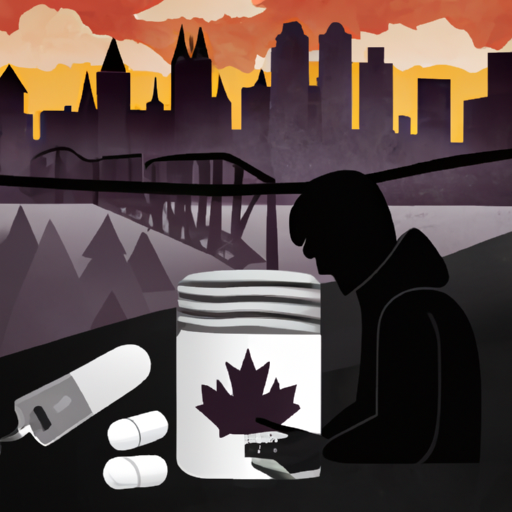Understanding the Devastating Effects of the Canadian Opioid Crisis
Canada is in the throes of an unrelenting opioid crisis. Over the past few years, there has been a significant increase in opioid-related deaths and emergencies. In a recent piece by CBC, this crisis is discussed in depth, highlighting its widespread disastrous impact on Canadian communities and individuals. The piece also sheds light on some of the efforts undertaken to combat this crisis.
The Rising Impact of the Opioid Crisis
The opioid crisis in Canada is taking a heavy toll on the country’s health and social sectors, increasing the number of drug-related overdose deaths and straining the capacity of emergency rooms and mental health resources. The rise of illicitly-produced opioids available in the market, such as fentanyl and its analogues, has raised new public health challenges. These drugs are often used unknowingly, leading to accidental overdoses and fatalities.
The Homelessness and Crime Conundrum
Another significant issue linked to the opioid crisis is an increase in homelessness and crime rates. Many individuals suffering from opioid addiction end up homeless and resort to criminal activities to support their addiction, such as theft and prostitution. This has resulted in an increased number of individuals incarcerated due to drug-related crimes, further stressing an already strained judicial system.
Health Inequality
The opioid crisis has further exposed the health inequalities afflicting Canadian society. Demographic factors such as income and ethnicity emerge as significant predictors of opioid addiction. The crisis disproportionately affects marginalized groups, including those with low incomes, Indigenous peoples, and those with mental health issues.
Efforts to Combat the Opioid Crisis
The Canadian government has taken several steps to address the opioid crisis:
- Increased funding has been provided to strengthen addiction treatment services, including a substantial investment for substance use and addiction program services.
- Laws have been updated to help authorities tackle problematic substance use.
- The Good Samaritan Drug Overdose Act has been passed, which provides immunity to individuals reporting overdoses.
- Naloxone kits have been made widely available free of charge to reverse opioid overdoses, potentially saving countless lives.
Nevertheless, more is needed to effectively reduce the harms associated with opioid use. CBC discusses the Canadian opioid abatement class action, a legal mechanism that could force opioid manufacturers to compensate for their role in the crisis, thereby channeling additional funding to combat this public health emergency.
The Vital Role of Community-Based Initiatives
Community-based organizations play a significant role in mitigating the impact of the opioid crisis, providing services and supports that meet the unique needs of individuals affected by addiction. From harm reduction initiatives to outreach and education programs, these efforts are critical to addressing the opioid crisis at a grassroots level.
Conclusion
While the opioid crisis continues to grip Canada, efforts from different sectors are underway to mitigate its devastating impacts. The action taken is a clear indication of the commitment to combat this crisis, but more is needed to turn the tide. Key elements to address the opioid crisis include targeting the societal factors contributing to drug use, ensuring an adequate supply of naloxone to reverse overdoses, and pursuing legal avenues like the Canadian opioid abatement class action to hold those responsible accountable. These measures, in combination with concerted efforts at a community level, provide a comprehensive approach to combating the opioid crisis—a catastrophe that has far-reaching consequences for all Canadians.
